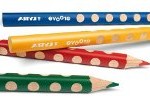Being able to write their name would increase a child’s level of self-esteem. Their ability to identify their works by writing their names on the papers would mean their readiness to seek bigger challenges like the spelling of more difficult words which are according to their learning levels.
⇒ Related Read: Signs of Low Self-Esteem in Children

Gear up your children and prepare them for the challenges of preschool as you begin teaching your child to write their names at home through these following steps:
• Teach the basic writing concepts first. Explain terms referring to direction like up and down, right and left, and including top, middle and bottom.
• You can begin the writing adventure with tracing of dots. Write the letters in broken lines if dots are too small to follow.
• Help the child distinguish straight lines and curved lines. This could be useful in letter formation.
• Write the letters of your child’s name in print. Always emphasize that the beginning letter should be capitalized and the succeeding ones should be in lower case.
• Hold your child’s hand to model different writing mechanics. This will show the difference between the curved and straight lines which compose the letters of their name. Always make your child remember that writing begins from top to bottom.
• Pronounce the letters while you write them down. This will give distinction to each of the letters and the sound would help them learn faster.
• Writing depends on the hand control. Make use of oversized pencils and crayons to avoid poor pencil posture. Show to the child the proper way of holding the thick pencil with their fingers.
• Use unlined paper. The tendency is for your child to write in big forms. Let them print the letters several times. The repetition would induce familiarity. Ask them to reduce the size of the letter and control the pencil for more legible writing.

• Introduce the lined paper once your child is able to write at normal sizes. Let them write within the lines and encourage space in between the first name and the last name.
⇒ Related Read: Why Is My Child’s Handwriting So Bad?
Seeing your child able to write their name would indicate their readiness to write more words suited for their age. Make every writing activity fun and exciting. Play with clay and string beans while imitating the shapes and forms of letters. Alphabet books could also make writing easier to learn because they help in the recognition of letters and differentiating them from each other.
Writing strokes are not difficult to master as you encourage informal scribbling and drawing. Shapes, lines and figures are springboards to writing properly.
Enjoyed reading this or learned something new? Click the Like and Share button below!
Like what you see here? Get parenting tips and stories straight to your inbox! Join our mailing list here.
























































